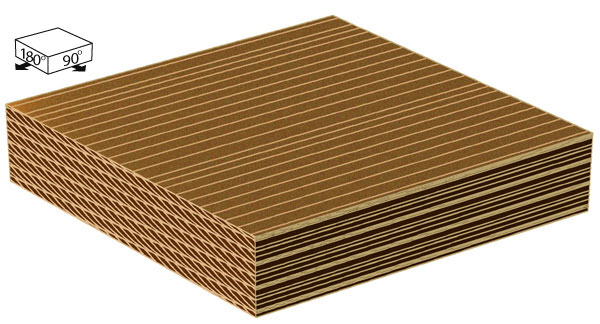Pacific Coastal and Marine Science Center
Bedform Sedimentology Site: “Bedforms and Cross-Bedding in Animation”


FIG. 5. Structure deposited by two-dimensional bedforms climbing at a stoss-erosional, lee-depositional, net-positive angle of climb. Other (more general) names for this structure are ripple drift (Sorby, 1859), type 1 ripple-drift cross-lamination (Walker, 1963), climbing-ripple structure (McKee, 1965), climbing-ripple cross-lamination (Allen, 1972), subcritically climbing translatent stratification (Hunter, 1977), erosional- stoss climbing-ripple cross-stratification (Harms and others, 1982), and stoss-erosional climbing-ripple structure (Rubin and Hunter, 1982). Most of the computer images in this volume illustrate stoss-depositional climb of bedforms, but with more complex behavior or morphology than shown here. Real examples of relatively simple stoss-erosional cross-stratification are shown in Figures 6 and 7.
RECOGNITION: Structures deposited by bedforms climbing at stoss- erosional angles lack complete rippleform laminae and instead have erosional bounding surfaces that separate the sets of cross-beds deposited by individual bedforms. This lack of completely preserved bedforms makes it difficult or impossible to determine bedform height and spacing. Cosets of cross-beds can originate by several processes other than bedform climbing: superpositioning of delta-like sediment bodies (Jopling, 1965), migration of potholes (Hemingway and Clark, 1963), migration and independent planing off of bedforms (Stride, 1965), and buildup and deep truncation of bedforms (Stokes, 1968). An origin by bedform climbing can be demonstrated by (1) an angular relation between climbing translatent strata and more nearly isochronous underlying or overlying strata, (2) a change in the path of bedform climb within a coset of cross-strata, the change having taken place simultaneously across the bedform field (Figs. 7, 13, and 14), or (3) recognition of distinctive foresets that were deposited simultaneously on the lee slopes of adjacent bedforms (FIG. 6). Additional examples of climbing translatent strata that are recognizable using these criteria are illustrated by Rubin and Hunter (1982). Because this structure does not contain preserved bedform crests, except in rare cases at the top of the coset, the crestline trend is usually determined from the cross-bed strike. This technique is based on an implicit assumption that the bedforms that deposited the cross-beds were migrating over a horizontal depositional surface. A technique that is not restricted to horizontal depositional surfaces is to determine the trend of the line of intersection of cross-bed planes and bounding-surface planes. This can be accomplished by inspection at the outcrop or by the use of a stereonet. This technique is useful for determining the trend of small bedforms superimposed on the inclined lee surfaces of larger bedforms, as discussed in detail in Figure 46. Unlike the stoss-depositional bedforms in Figures 3 and 4, the bedforms in this example undergo erosion on their stoss sides, thereby producing upcurrent-dipping bounding surfaces. The bounding surfaces scoured by the migrating bedform troughs dip upcurrent, because deposition causes the elevation of the bedform trough to climb downcurrent. Consequently, the bounding surfaces dip in a direction opposite to that of most of the foresets; the lowermost foresets dip upcurrent because they are tangent to the bounding surfaces. A vertical profile of dips through this structure would show steep downcurrent dips at the top of each set of cross-beds, a reduction in inclination downward through the set, low-angle upcurrent dips in beds immediately overlying the lower bounding surface of the set, and an abrupt change to steep downcurrent dips when the bounding surface is crossed and the underlying set is sampled.
ORIGIN: In most flows, rates of deposition are much less than rates of bedform migration, and the resulting angles of bedform climb are generally so small that where bedforms climb, they usually climb at stoss-erosional angles. Consequently, of the structures deposited by migrating bedforms, those produced by stoss-erosional, lee-depositional angles of climb are the most common. Although some structures deposited by climbing wind ripples (FIG. 6), oscillation ripples, and ripples in flows with high rates of deposition from suspension are almost as perfect and regular as those in this example, bedforms in most other flows tend to be more three-dimensional, or they tend to reverse direction of migration, thereby changing the path of climb.